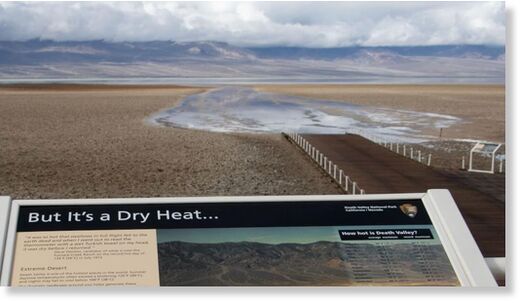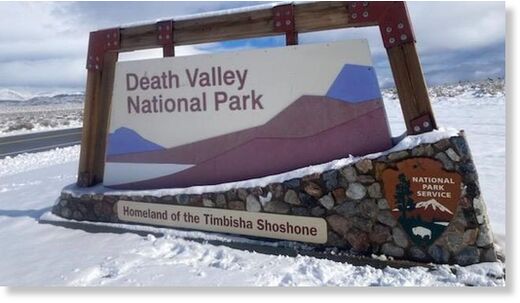The storm dropped 1.5 inches of rainfall in just the four days between Sunday and Wednesday, rivaling the park's annual average rainfall amount of nearly 2 inches, according to the National Park Service.
This downpour prompted the closure of several park roads after flash flooding on Tuesday night. Debris had to be removed from some roads to reopen them, but some side roads remain closed due to storm damage.
Park visitors are encouraged to check the Death Valley National Park website for the most up-to-date road closures and conditions information.
Flooding from the atmospheric river exacerbated storm damage at the park caused by the remnants of Hurricane Hilary on Aug. 20, when 2.2 inches of rain fell on the park in one day.
The recent floods have extended the life of a temporary lake that formed over a salt flat in the park's Badwater Basin after the downpour from Hilary.

"Most of us thought the lake would be gone by October," said park ranger Abby Wines. "We were shocked to see it still here after almost six months. This week's rain will extend how long the lake is here. It's too shallow to kayak in, but it makes amazing reflections of the mountains."
The storm contributed to another otherworldly sight in the driest place on the continent: snow. According to the NPS, snow fell down to about 4,000 feet in the park and left mountains covered in snow.




Reader Comments